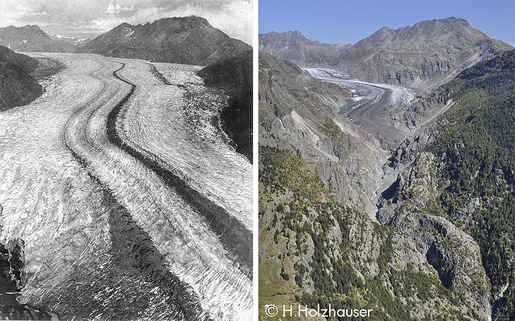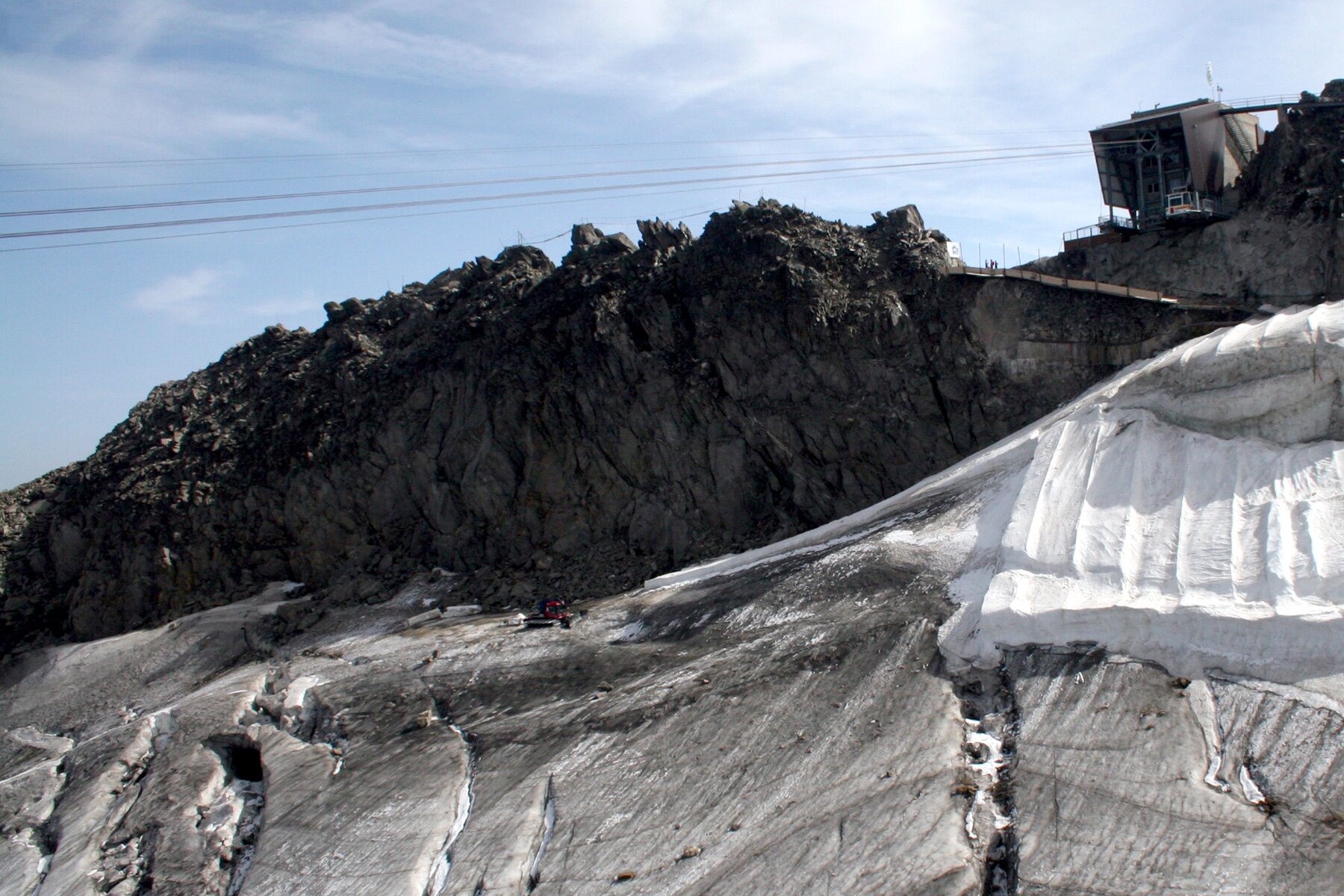Climate change
The Changing Climate makes the Alps Sweat
Melting glaciers, less snow in lower regions, rain more often than snow as well as intensive foehn storms: the climate change doesn't stop at the alps. Being the most fragile of ecosystems, the alps are especially affected by global warming. From the end of the Little Ice Age until now, the global temperatures have risen by approximately 0.8 °C. In the alps it has risen considerably more, namely 2°C. Alarming is the fact that it has risen massively within the last 30 years. The alps are sweating! Some of you will say: Ya and? Sweating is healthy. After all, the Finns don't spend half of their lives in the sauna for nothing! Heat, however, does not agree with the mountains at all.

The Aletschgletscher in the year 1856 and today / photo: Hanspeter Holzhauser
In the last decades, the amount of snow in the lower regions, below 1500 m above sea level, has clearly decreased and it also does not remain on the ground as long as it used to. Today only 90 % of the 666 alpine ski resorts have reliable snow conditions. If through the global warming the snowfall boundary rises by 300 meters (150 m per degree), then by 2050 only about half of the ski resorts will still be receiving enough snow. In 20 years, if the greenhouse gas emissions continue at this rate, snowboarding and skiing in the alps will be very limited, especially in regions of average altitudes. Even significant resorts like „Portes du Soleil“ are on the red list.
The continuing global warming doesn't just make the snow and glaciers melt but also the permafrost. One can imagine the permafrost as a kind of glue which holds the rocks and rubble together. If it melts, the mountain slopes become instable and start to crumble. Many of the summit stations are threatened as well as they are often built in permafrost regions.
